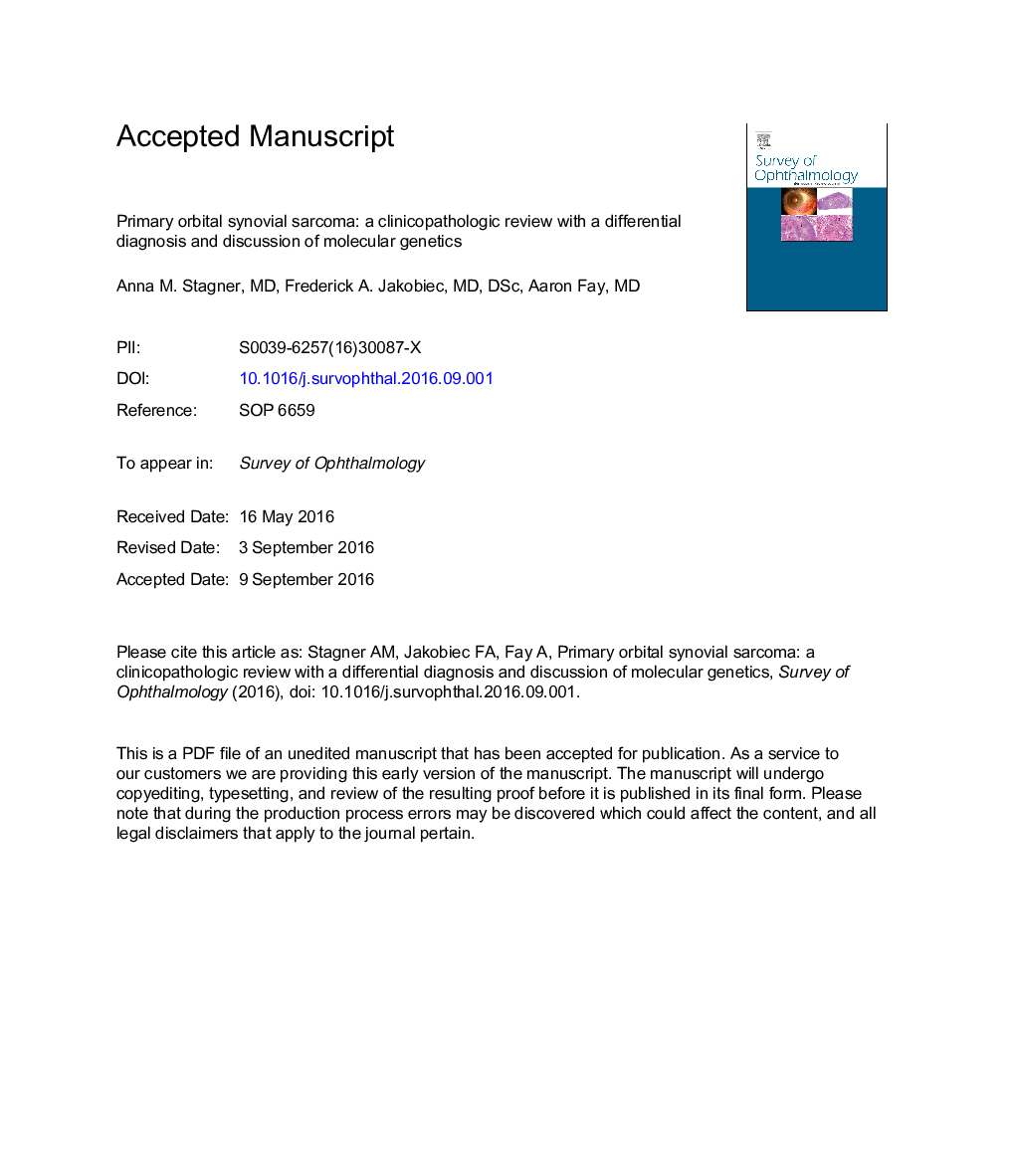| Article ID | Journal | Published Year | Pages | File Type |
|---|---|---|---|---|
| 5705807 | Survey of Ophthalmology | 2017 | 28 Pages |
Abstract
Synovial sarcoma is a soft-tissue sarcoma of the extremities developing in young adults that has rarely been reported in the orbit. Synovial sarcoma is associated with a unique translocation, resulting in an SYT-SSX fusion gene. We analyze 7 published periocular cases, together with the current one, to gain a better appreciation of the features of the tumor in this location and to compare the findings with those derived from nonophthalmic studies. An inferior orbital mass developed in a 31-year-old woman after experiencing periorbital and hemifacial pain for more than a decade. Radiographically, the mass was circumscribed and displayed coarse internal calcifications. A large but subtotal excision with histopathologic examination disclosed a primitive tumor composed of spindled and ovoid cells. Immunohistochemistry demonstrated positivity for nuclear transducin-like enhancer of split 1 and membranous CD99, typical for synovial sarcoma. Fluorescence in situ hybridization identified a (X,18) translocation in the tumor cells. The patient underwent postoperative adjuvant proton beam radiotherapy with a good response that has been maintained during 1 year of follow-up. Orbital soft-tissue tumors of all types are increasingly identified by their distinctive genetic signatures that offer more specificity than standard immunohistochemical tests.
Related Topics
Health Sciences
Medicine and Dentistry
Ophthalmology
Authors
Anna M. MD, Frederick A. MD, DSc, Aaron MD,
